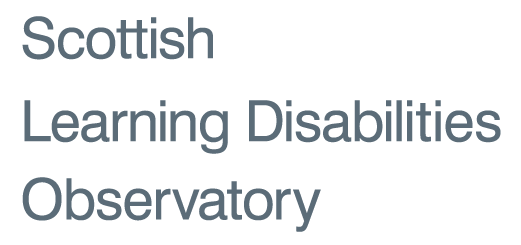High risk of anticholinergic burden in adults with learning disabilities

Background
Several drugs have anticholinergic side effects which are associated with poor health outcomes, but the concern is the additive effect of these drugs used at the same time – known as anticholinergic burden.
In older adults (65+), anticholinergic burden has been linked to numerous poor health outcomes, including hospital admissions and all-cause mortality (death). However, pharmacotherapy issues associated with anticholinergic burden (e.g. multimorbidity – 2+ long-term health conditions), and polypharmacy (5+ medications), are present in the lives of those with learning disabilities at much younger ages.
People with learning disabilities are one of the most heavily medicated patient groups, and known risk factors for high anticholinergic burden are faced at much younger ages. However, there is limited available evidence regarding anticholinergic burden in adults with learning disabilities, especially at younger ages. We aimed to address this.
What we did
We used the Primary Care Intellectual Disabilities Register of NHS Greater Glasgow & Clyde to identify a representative population of adults with learning disabilities (aged 17–94). The n=4,305 adults with learning disabilities were matched to general population controls (n=12,915) on age, sex and neighbourhood area. We obtained permission to access administrative health data linking information from pharmacists and doctors.
What we found
More adults with learning disabilities were prescribed (any) anticholinergic medications compared to the general population (56.9%, 47.8% respectively, OR=1.46 [1.36-1.57]). For the medications known to have a very strong anticholinergic risk, adults with learning disabilities were prescribed more than twice the amount compared to controls (33.2%, 16.4% respectively, OR=2.08 [1.89-2.27]). When examining summed total anticholinergic burden scores, 45.8% adults with learning disabilities had a very high burden (3+) compared to 34.5% of general population controls (OR=1.66 [1.54-1.72]).
Group differences existed at all ages from 17-74, but were biggest for the youngest group. For those aged 17-24 years old, the adults with learning disabilities were just under 3 times more likely to experience very high anticholinergic burden. Irrespective of sex, age or neighbourhood deprivation, adults with learning disabilities are at a higher risk of anticholinergic burden than other people.
If we focus on just those with learning disabilities, women were 20% more likely than men with learning disabilities to have very high anticholinergic burden. This risk was greater for those aged 45+.
What these findings mean
Adults with learning disabilities are at a higher risk of anticholinergic burden than controls, especially young adults and women. This is a novel and important finding which highlights the pharmacovigilance issues in this population. Prescriptions of anticholinergic medication (which includes the majority of psychotropic medications such as antipsychotics) can increase the likelihood of adverse effects of health and reduced quality of life in an already vulnerable cohort. Whilst there is an awareness of the issues surrounding antipsychotic prescribing for ‘problem behaviour’, the significant poor health outcomes associated with high anticholinergic burden needs highlighted. These results have implications for increased patient medication reviews with consideration to the anticholinergic burden induced by multiple drugs, as well as other alternative interventions such as psychosocial/ behavioural interventions for challenging behaviours and sleep problems. Clinicians undertaking medication reviews need to consider cumulative anticholinergic burden across multiple medications, including in young adults with learning disabilities, not just older adults, and particularly women.
This research is published in the Journal of Intellectual Disability Research.
For more information about this work, please contact Dr Laura Ward
Page last updated 25th October 2021
